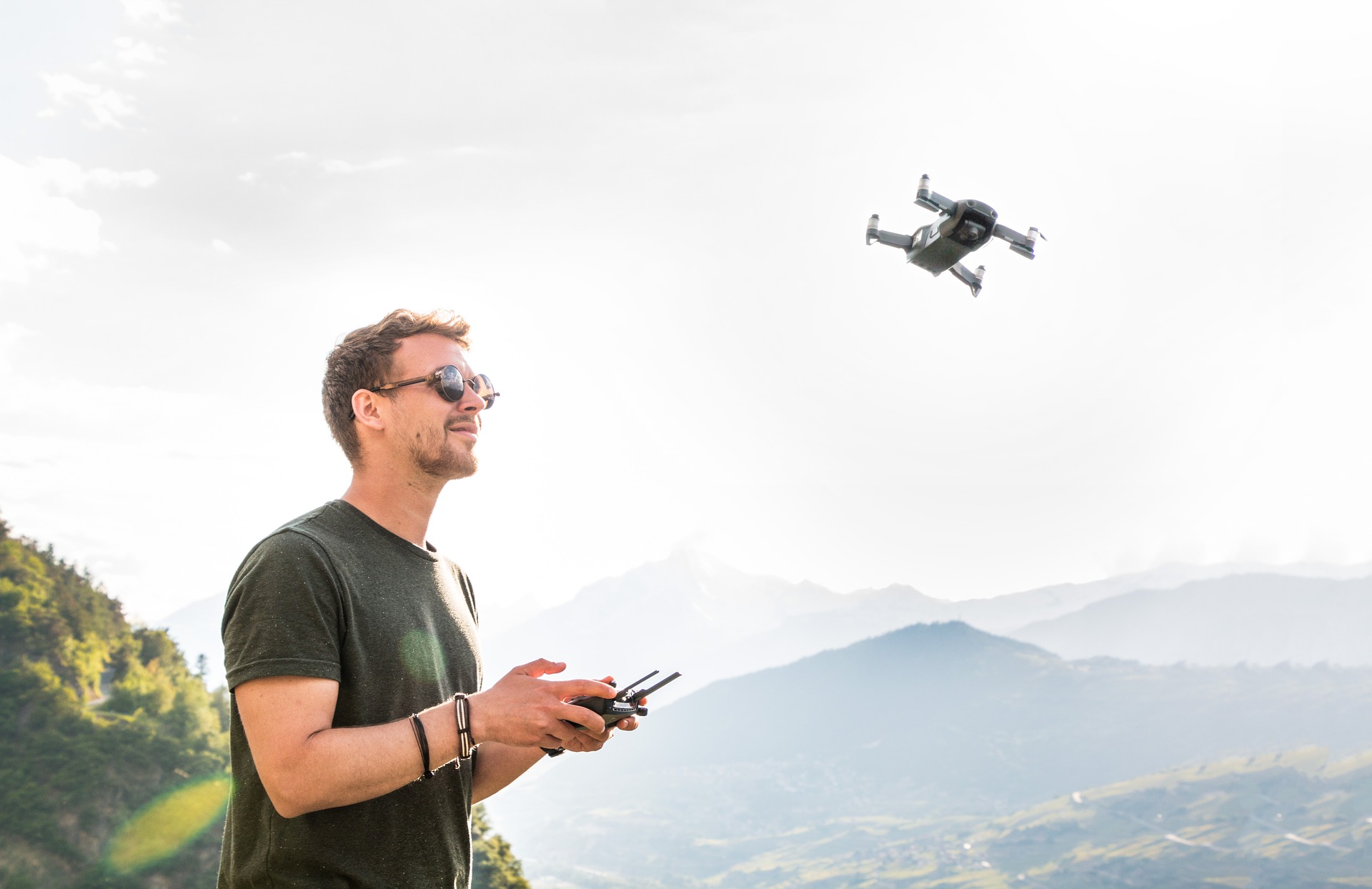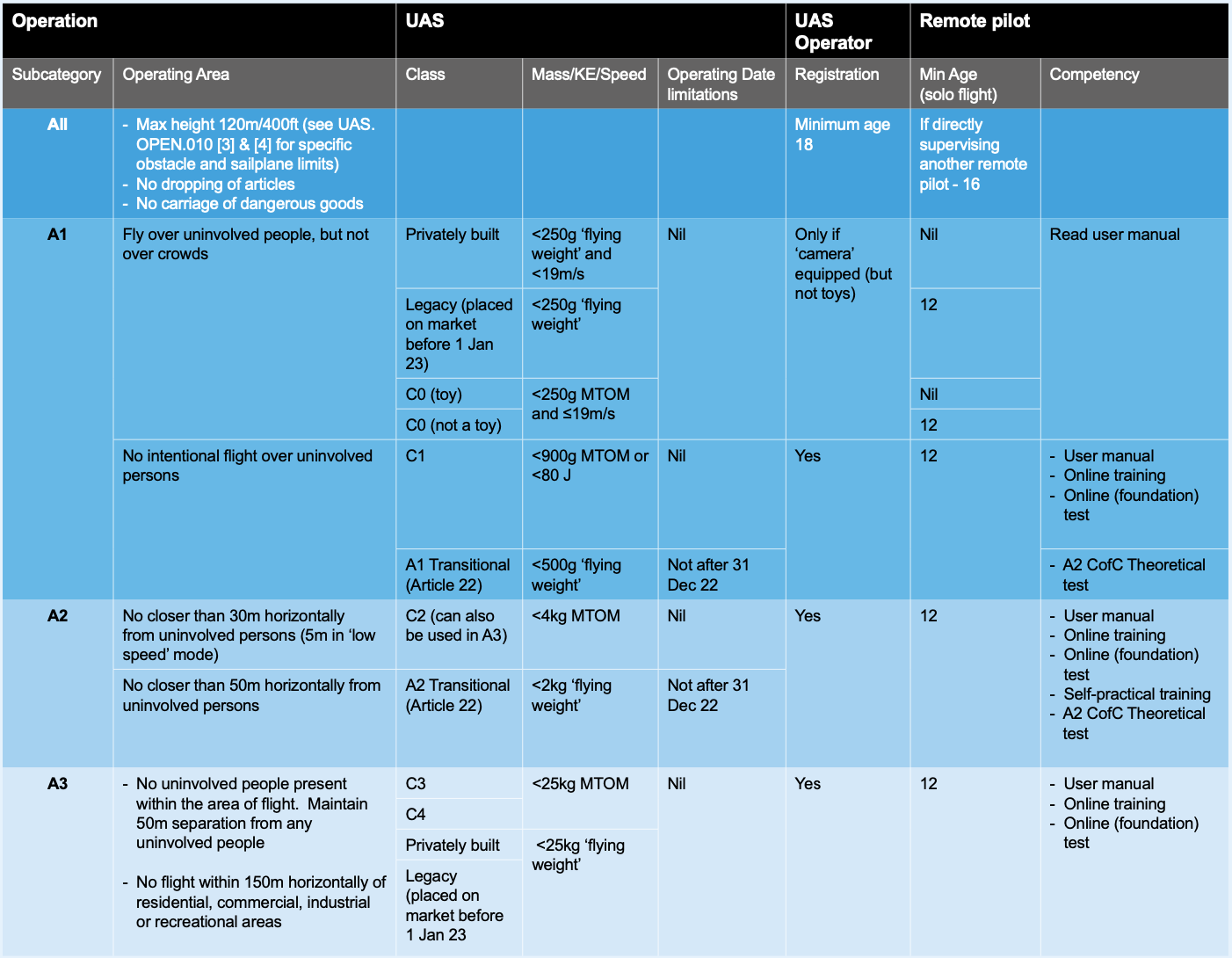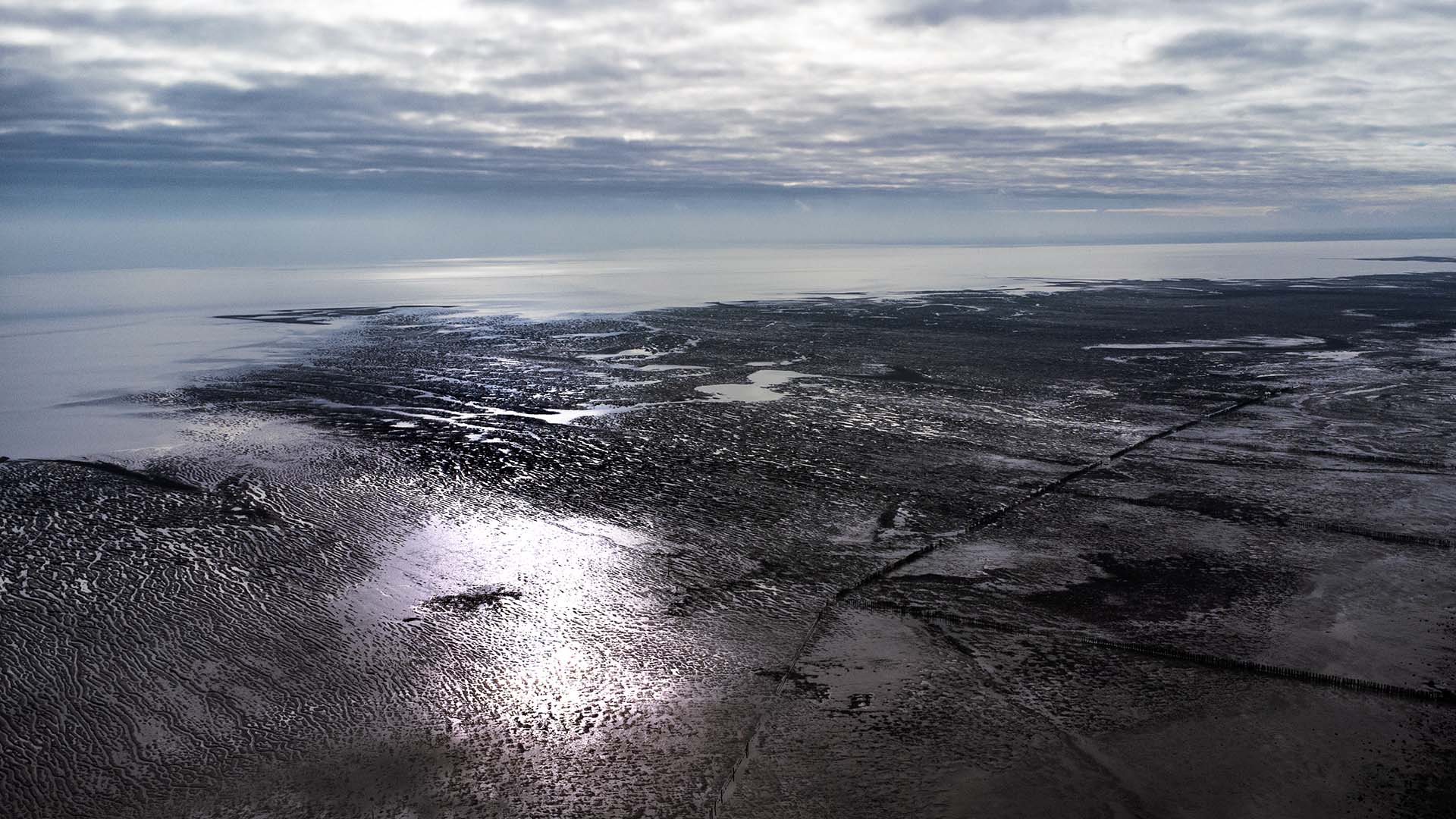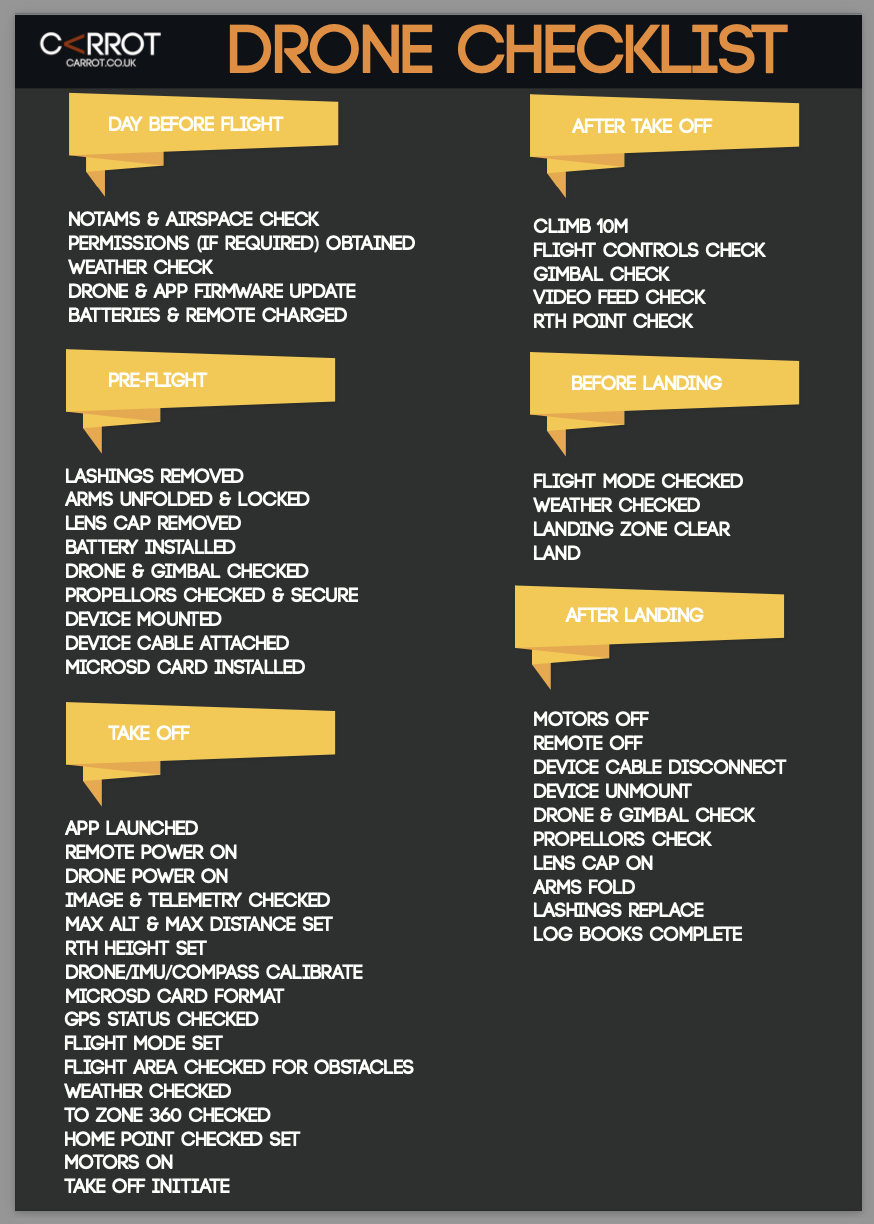Read Time 7 mins
20/11/2021

At Carrot St Albans Drone Services we fly drones for a living but it can be a fun hobby too. In this article we can tell you how fun recreational drone flying can be, offer some tips and advise what the best drones for a hobbyist are.
Please note that this article contains affiliate links.
Drones can be great fun to fly and you can get some amazing photographs & video from a unique perspective.
I love flying my little Tello around the house practising my flying skills. Then going into the countryside to take stunning photos & videos with my bigger drones.
First Things First - Getting Legal
Apart from toys it is important that you ensure you get your Flyer ID & Operator ID. You must have your Operator ID marked on your drone.
Getting a Flyer ID requires that you to learn the Drone Code and take a 25 question on-line exam. It is very simple and well within the reach of everybody. More information can be found here at the “Register Drones CAA Website”.
Your First Flight
Whilst drones can be very easy to fly the first time can be quite thrilling but also quite daunting. Ensure that your maiden flight is in an open space and make sure that you have thoroughly read and understood that manual. It is important that before you launch you make sure that the drone has carried out all its initialisation checks and that it has established a decent GPS signal.
Any horror stories that you might have heard about “fly aways” or “rogue drones” are nearly all because remote pilots have not allowed the drone to initialise correctly.
Once you have ensured that the area is clear, take off……then land straight away.
Moving On
Once you have taken your first tentative steps into the air it is time to familiarise yourself with the flight controls.
Take off again then practise basic manoeuvring, climbing, descending, yawing (rotating on the central axis), backwards, forwards, left & right (roll). Do all this initially with the drone facing away from you so it is in the more natural orientation.
Having mastered the correct orientation now it is time to practise flying in the reverse orientation. This time yaw the drone so that the front is facing you and now again try climbing descending, yawing, backwards, forwards, left & right. Of course the controls seem to be reversed and so it can take quite some getting used to but the skills build very quickly.
Now I would recommend familiarising yourself with the safety features. Like the Return to Home (RTH) functions where if the drone loses contact with the controller the drone will fly back to its take off position and, for most models, land.
One of the best exercises to hone your skills is to fly the drone around a central point, like a pole, keeping the camera facing the pole. This takes coordination of roll and yaw. Give yourself plenty of space and don’t start too close to the pole. I find the easiest way to do this is to keep the roll constant and smoothly adjust the yaw to keep the camera pointing in the right direction.
Mastering this will allow you take some excellent, smooth & professional looking videos. Taking good images becomes much easier once the flying is second nature.
Taking Photos & Videos
Now you have got to grips with and learnt the basic flying skills it is time to learn to use the camera. It is best to start just taking some basic photos and, if fitted to your aircraft, practice moving the gimbal up and down and playing with the zoom.
Most drones have built in photo and video functions, some like a conventional camera and others that require the movement of the drone. The options are many a varied depending on the drone that you have bought. The are some excellent YouTube videos out there demonstrating the functions.
Rules
In the UK the flying of drones is governed by the UK Civil Aviation Authority. As a recreational flyer you will be flying in what is called the Open Category.
The basic rules are that you MUST have visual line of sight, VLOS, of your drone at all times and that you must not fly higher than 120m (400’) above the earth’s surface.
Depending on the drone that you have, there are rules about how close you may fly to uninvolved people. All these rules are explained when you read up the Drone Code I mentioned above. The CAA sets out all the rules here. The table below is a useful summary.

As an example, the DJI Mini 2, which weighs just under 250g, falls into the A1 subcategory legacy. You can work out for yourself what rules apply.
At the time of writing there are no “C” marked drones on the market so anything you buy now will be classed as legacy or transitional.
Most airports have No Fly Zones with Runway Protection Zones protecting their airspace. You must only fly in these zones once you have permission from the appropriate airport authority.
Safety
Notwithstanding all the rules, being hit by even a small drone will hurt so just be sensible and if in doubt whether something is safe or not then discretion is the better part of valour.
Always carry out some basic pre-flight checks. We recommend downloading our free Drone Checklist. Ensure that all the software/apps are up to date and that your drone has been updated to the latest version. Check the drone over to make sure it is not damaged and, most importantly, change the props if they have the slightest nick or dent in them.
Make sure that your batteries are fully charged. If there is any swelling then the battery is damaged and must not be used. Dispose of damaged batteries in a responsible way.
I always use a checklist when I fly. We recommend that you download our free checklist .

A2 Certificate of Competence
Some of the larger drones fall into the A2 subcategory of the Open Category. To be able to fly these (or A1 transitional) you need to obtain your A2 Certificate of Competence, more commonly referred to as the A2CofC. This is a really fun course and you will learn lots of really useful information making you a far better pilot. The courses are provided by Recognised Assessment Entities (RAEs). There are many out there so shop around. Some may offer free courses but charge for the exam so don't be seduced into paying more than you should. Some of the larger ones are Heliguy, UAVHub or Coptrz. I did mine with Heliguy and thought that it was excellent.
A DJI Mini 2 would not require you to have an A2CofC to fly but if you went for the heavier Mavic Air 2 then you would need an A2CofC to fly legally.
Even if your drone does not require you to have an A2CofC I would thoroughly recommend you get one as it will improve your knowledge no end and it is a fun course.
So which drone should you get?
Well this very much depends on what you want to do with your drone and, of course, your budget. I have set out a few below from toy indoor drones to larger consumer drones.
DJI is certainly the most prevalent of the drone manufacturers and the DJI Mini 2 is the most popular amongst the recreational flyers. An excellent entry level drone for the amateur.
Weighing in at just under 250g means that it can be flown most anywhere, including over uninvolved persons, and you are not required to have an A2CofC. We use the Mini 2 for commercial work in busy urban areas. Due to its compactness, it is fabulous to travel with and easy to fly on a breezy day.
DJI claim a 31 minute flight time per battery.
Despite its small size it has an awesome camera taking 4k video and high resolution still images with a decent zoom.
It also has great built in presets called QuickShot modes, can take panoramas and time lapse. All great fun taking professional looking photos and videos.
The Mavic Air 2S is for the serious amateur, whilst remaining fairly compact it is jammed full of great features. As it weighs just under 600g you will need an A2CofC to fly it and you must not fly it within 50m of uninvolved persons.
With a 1” camera sensor it is capable of 5.4k video and DSLR quality photographs.
The Air 2S can follow or circle a subject with its ActiveTrack & FocusTrack features. It has sensors to perceive its environment allowing to actively avoid obstacles.
If you are serious about your photography and videography this is a serious drone and comes with our highest recommendation.
Flying dones offers so much. There is the skill of the flying and the satisfaction of taking some amazing photographs and videos. It gets you out of the house and you can end up visiting places that you would never have thought of going to before.
It can be as challenging as you want it to be, from honing your flying skills to improving your photography. If you are into Social Media your friends will love the images you procuce.
Once you have your drone you will be hooked .
